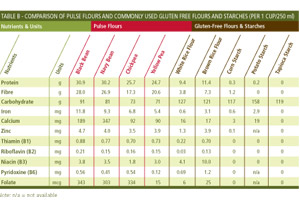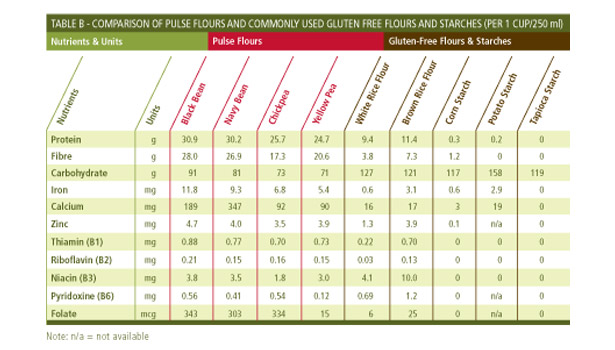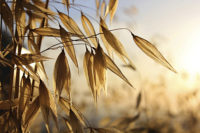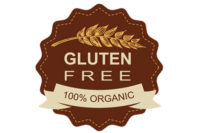 There are a growing number of gluten-free products in the marketplace, which is good news for consumers with celiac disease and nonceliac gluten sensitivity. However, many baked products and snack foods are made with white rice flour and starches that are low in fiber, B vitamins, iron and other nutrients. In addition, they are often higher in sugar, fat and calories than their gluten-containing counterparts.
There are a growing number of gluten-free products in the marketplace, which is good news for consumers with celiac disease and nonceliac gluten sensitivity. However, many baked products and snack foods are made with white rice flour and starches that are low in fiber, B vitamins, iron and other nutrients. In addition, they are often higher in sugar, fat and calories than their gluten-containing counterparts.
Enter pulses, also known as legumes. Dried beans, peas and lentils are loaded with fiber, protein, vitamins and minerals, yet are low in fat and sodium. Adding pulses is a great way to improve the nutritional quality of gluten-free products (see the chart comparing pulse flours with other gluten-free flours and starches).
Individual pulse flours have unique flavor, color and taste profiles. Bean flours have a stronger flavor, whereas yellow pea flour is blander in taste. Pulse flours and their fractions can be used in variety of products. To learn more about using pulses in food preparation, check out these excellent resources from Pulse Canada, the USA Dry Pea & Lentil Council and Best Cooking Pulses Inc.:
“Pulses and the Gluten-Free Diet”
This recipe book includes information about celiac disease and gluten sensitivity, nutrient composition, how to use pulses, tips for incorporating pulses into the diet and 26 recipes (with nutritional analysis). Visit www.pulsecanada.com/gluten-free-foods.
“Pulses…Gluten-Free: Give Gluten-Free Flour Power”
This resource provides background information about the gluten-free market and consumers, nutritional composition and functionality of pulses, as well as 10 recipes (with nutritional analysis). You can find it at www.northernpulse.com/uploads/resources/743/gluten-free-brochure-12-11.pdf.
For pulse fractions, food applications, nutritional analysis and functional properties, including fact sheets for pulse flours, proteins, fiber and starches, go to www.pulsecanada.com/food-health/composition-functionality.
“Using Pulses in Batter and Breading Applications”
Information about using pea flour, starch and fiber can be found at www.pulsecanada.com/uploads/9b/ee/
9beed95b20b346ec7e58a7dbb827b47d
/Batter-Breading-Facsheet-Nov-2011.pdf.
Recipes using pulse flours
A variety of recipes (breads, cookies, cakes, muffins, desserts, soups, sauces and appetizers) using yellow pea flour and/or chickpea flour can be found at www.bestcookingpulses.com/gluten_free_recipes.php
Shelley Case, RD, is a registered dietitian and leading international expert on celiac disease and the gluten-free diet. Case is also a member of the Medical Advisory Boards of the Celiac Disease Foundation, Gluten Intolerance Group and Canadian Celiac Association and the Scientific Advisory Board of the Grain Foods Foundation. She also has a national best-selling book, Gluten-Free Diet: A Comprehensive Resource Guide. Visit www.glutenfreediet.ca for more information.




